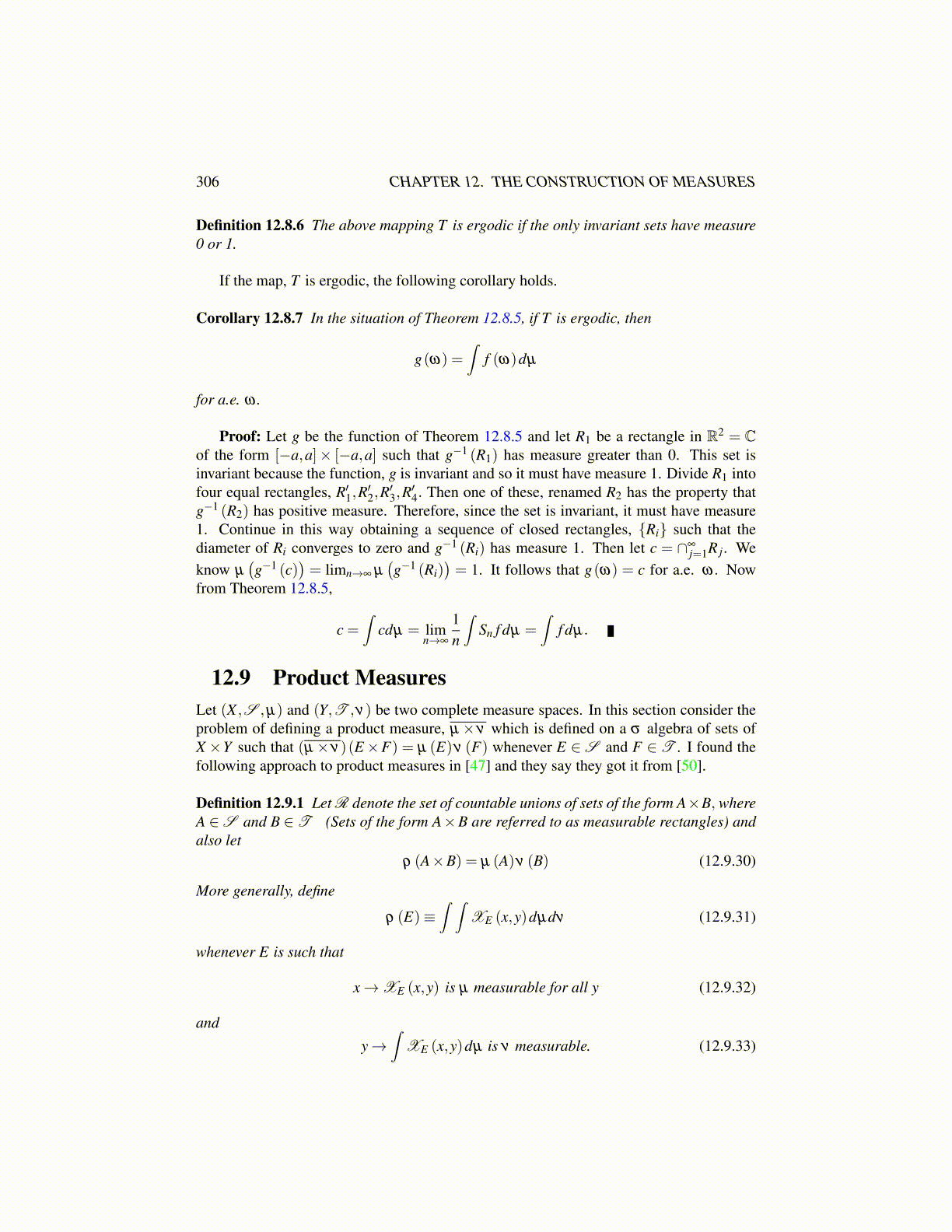
306 CHAPTER 12. THE CONSTRUCTION OF MEASURES
Definition 12.8.6 The above mapping T is ergodic if the only invariant sets have measure0 or 1.
If the map, T is ergodic, the following corollary holds.
Corollary 12.8.7 In the situation of Theorem 12.8.5, if T is ergodic, then
g(ω) =∫
f (ω)dµ
for a.e. ω .
Proof: Let g be the function of Theorem 12.8.5 and let R1 be a rectangle in R2 = Cof the form [−a,a]× [−a,a] such that g−1 (R1) has measure greater than 0. This set isinvariant because the function, g is invariant and so it must have measure 1. Divide R1 intofour equal rectangles, R′1,R
′2,R′3,R′4. Then one of these, renamed R2 has the property that
g−1 (R2) has positive measure. Therefore, since the set is invariant, it must have measure1. Continue in this way obtaining a sequence of closed rectangles, {Ri} such that thediameter of Ri converges to zero and g−1 (Ri) has measure 1. Then let c = ∩∞
j=1R j. Weknow µ
(g−1 (c)
)= limn→∞ µ
(g−1 (Ri)
)= 1. It follows that g(ω) = c for a.e. ω . Now
from Theorem 12.8.5,
c =∫
cdµ = limn→∞
1n
∫Sn f dµ =
∫f dµ.
12.9 Product MeasuresLet (X ,S ,µ) and (Y,T ,ν) be two complete measure spaces. In this section consider theproblem of defining a product measure, µ×ν which is defined on a σ algebra of sets ofX ×Y such that (µ×ν)(E×F) = µ (E)ν (F) whenever E ∈S and F ∈ T . I found thefollowing approach to product measures in [47] and they say they got it from [50].
Definition 12.9.1 Let R denote the set of countable unions of sets of the form A×B, whereA ∈S and B ∈ T (Sets of the form A×B are referred to as measurable rectangles) andalso let
ρ (A×B) = µ (A)ν (B) (12.9.30)
More generally, define
ρ (E)≡∫ ∫
XE (x,y)dµdν (12.9.31)
whenever E is such that
x→XE (x,y) is µ measurable for all y (12.9.32)
and
y→∫
XE (x,y)dµ is ν measurable. (12.9.33)